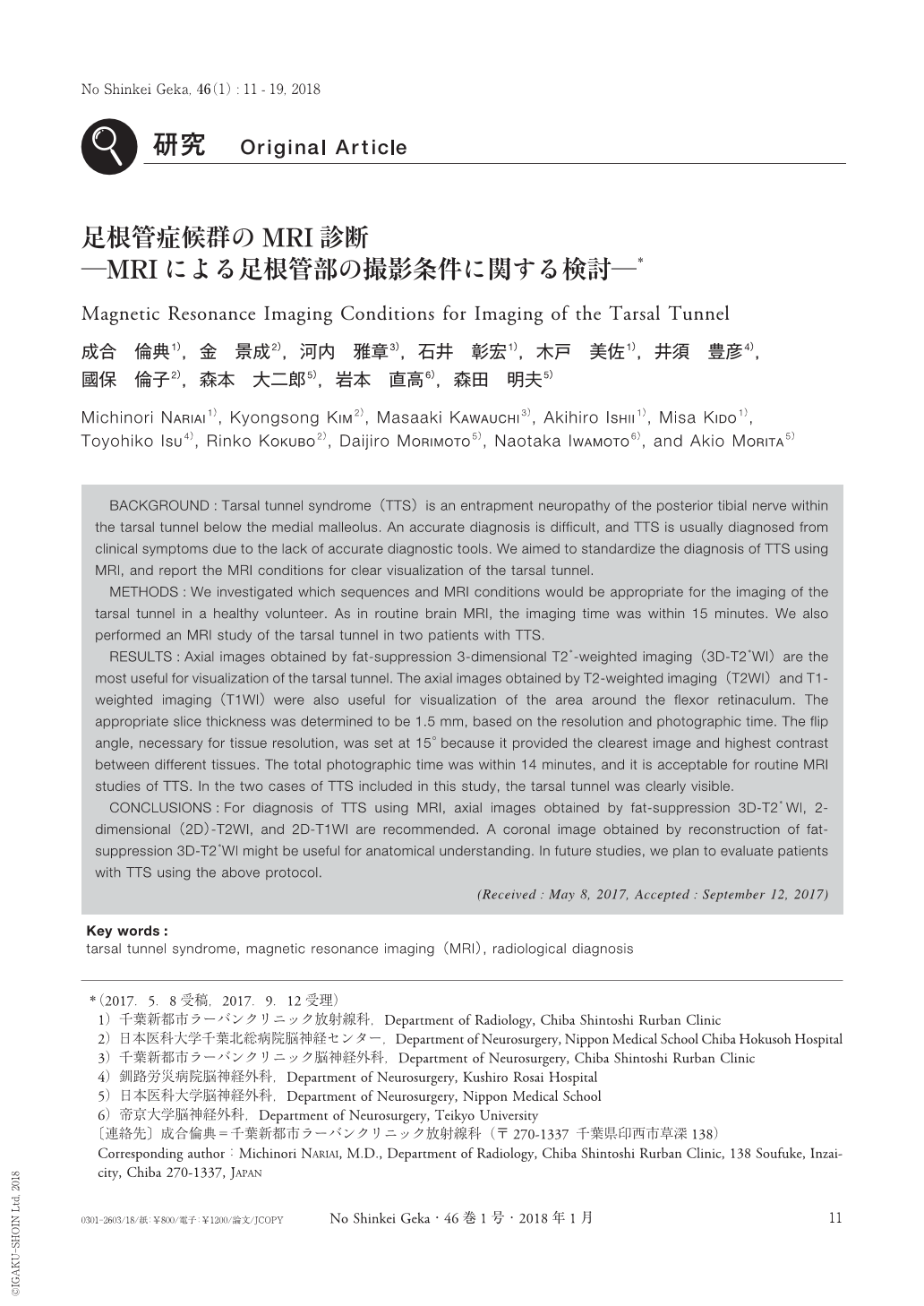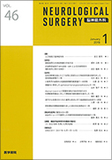Japanese
English
- 有料閲覧
- Abstract 文献概要
- 1ページ目 Look Inside
- 参考文献 Reference
Ⅰ.はじめに
足根管症候群(tarsal tunnel syndrome:TTS)は,脛骨内果の足根管部で後脛骨神経が絞扼されることで,足底のしびれや痛み,異物付着感,冷えなどを来す疾患である7,8,11-13,20).その有病率は低くないものの,確定診断に至る手段が乏しく,治療の必要な症例が正しく診断され治療されているとは言いがたい7,9,10,12,15).TTSの原因としては,ガングリオンなどの腫瘤によるものと特発性のものとがあるが,前者の診断には超音波やMRIの有用性が認められている一方,後者については画像診断に関する詳細な検討が不十分である5,8-11,15,20).
近年,MRI機器の進歩とともに,末梢神経障害に対するMRIによる診断の試みが報告されつつある1,4,6,14,17-19).TTSに関しても今後の検討を行っていく上では,MRIによる診断方法の標準化が必要である.今回われわれは,TTSのMRI検査を標準化すべく,足根管および後脛骨神経を明瞭に描出するために適正な撮影条件について検討し,TTS患者で検証したため報告する.
BACKGROUND:Tarsal tunnel syndrome(TTS)is an entrapment neuropathy of the posterior tibial nerve within the tarsal tunnel below the medial malleolus. An accurate diagnosis is difficult, and TTS is usually diagnosed from clinical symptoms due to the lack of accurate diagnostic tools. We aimed to standardize the diagnosis of TTS using MRI, and report the MRI conditions for clear visualization of the tarsal tunnel.
METHODS:We investigated which sequences and MRI conditions would be appropriate for the imaging of the tarsal tunnel in a healthy volunteer. As in routine brain MRI, the imaging time was within 15 minutes. We also performed an MRI study of the tarsal tunnel in two patients with TTS.
RESULTS:Axial images obtained by fat-suppression 3-dimensional T2*-weighted imaging(3D-T2*WI)are the most useful for visualization of the tarsal tunnel. The axial images obtained by T2-weighted imaging(T2WI)and T1-weighted imaging(T1WI)were also useful for visualization of the area around the flexor retinaculum. The appropriate slice thickness was determined to be 1.5 mm, based on the resolution and photographic time. The flip angle, necessary for tissue resolution, was set at 15°because it provided the clearest image and highest contrast between different tissues. The total photographic time was within 14 minutes, and it is acceptable for routine MRI studies of TTS. In the two cases of TTS included in this study, the tarsal tunnel was clearly visible.
CONCLUSIONS:For diagnosis of TTS using MRI, axial images obtained by fat-suppression 3D-T2*WI, 2-dimensional(2D)-T2WI, and 2D-T1WI are recommended. A coronal image obtained by reconstruction of fat-suppression 3D-T2*WI might be useful for anatomical understanding. In future studies, we plan to evaluate patients with TTS using the above protocol.

Copyright © 2018, Igaku-Shoin Ltd. All rights reserved.


